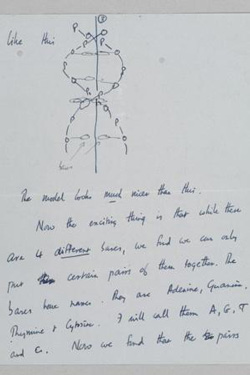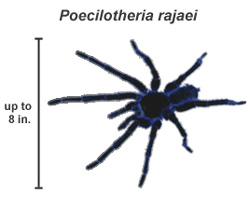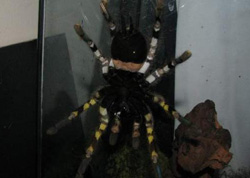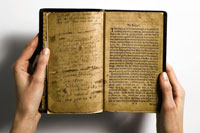Monday 04/22/13
Human Interest News — Posted on April 22, 2013
Letter from DNA structure’s co-discoverer sells at auction for $6M
 This letter sure has dominant genes — a 1953 missive from the co-discoverer of DNA’s structure to his 12-year-old son explaining how “life comes from life’’ was auctioned for a record-setting $6 million on April 10th.
This letter sure has dominant genes — a 1953 missive from the co-discoverer of DNA’s structure to his 12-year-old son explaining how “life comes from life’’ was auctioned for a record-setting $6 million on April 10th.
Francis Crick’s so-called “secret of life’’ letter to his son Michael at boarding school, saying that he and James Watson had discovered DNA’s double-helix structure, went for $5.3 million at Christie’s in Rockefeller Center. The total hit $6,059,750 with the buyer’s commission.
The handwritten, seven-page note, which the auction house had estimated would fetch “only” $1 million to $2 million, set a world-auction record for any letter, it said.
The previous record was $3.4 million, set in 2008 by an Abraham Lincoln letter, said Francis Wahlgren, Christie’s international department head of books and manuscripts.
The winning bid was made over the phone by a “private individual’’ who wants to remain anonymous for now, he said.
“Jim Watson was in the room’’ for the auction, said Wahlgren, adding that the famed 85-year-old scientist “was happy to see history made.’’
Crick, Watson and Maurice Wilkins were awarded the Nobel Prize in 1962.
The letter is “a priceless object,’’ Wahlgren said. “It summarizes one of the greatest advances of the 20th century expressed in a very poignant letter to his son. And it’s significant in that it announces their discovery well ahead of the publication in the scientific journal.’’
The letter to his son was written about a month before the landmark research was published.
The British scientist’s letter includes a simple drawing of the DNA double-helix molecule. He cautions that the model he and Watson built “looks much nicer than this.’’
The letter begins with a major understatement: “Jim Watson and I have probably made a most important discovery.’’
In easy-to-understand language, it says “We have built a model for the structure of de-oxy-ribose-nucleic-acid (read it carefully) called D.N.A. Our structure is very beautiful,’’ he tells his boy.
And he adds, that “We think we have found the basic copying mechanism by which life comes from life. You can understand that we are very excited.”
“Read this carefully so that you understand it. When you come home we will show you the model,’’ wrote Crick, who ended the letter, “Lots of love, Daddy.’’
Michael Crick, who attended the auction, wrote about the letter for the Christie’s catalog, saying, “As far as we know, this is the first public description of these ideas that have become the keystone of molecular biology and which have spawned a whole new industry and generations of follow-on discoveries.’’
After leaving England, Francis Crick, who died in 2004, spent decades doing research at the Salk Institute in California. His family has said half the proceeds of the letter’s sale will go to benefit the institute.
Michael Crick told the Associated Press that the family hopes the buyers will give people the opportunity to see the items “and that they will be an inspiration for future scientists.’’
Tarantula The Size Of A Human Face Discovered

Scientists have found an enormous, previously unknown, species of venomous spider in a remote Sri Lankan village.
The giant tarantula is as big as a human face.
Its legs, which have unique daffodil-yellow markings, span a massive 20cm (eight inches). The arachnid also has a distinctive pink band around its body.
The new species was found in the war-torn north of the South Asian country by scientists from Sri Lanka’s Biodiversity Education and Research (BER) organization.
It has been named Poecilotheria rajaei, in recognition of senior police officer, Michael Rajakumar Purajah, who guided the research team through a hazardous jungle overrun by civil unrest in order to seek out the spider.
The arachnid had originally been presented to BER three years ago by villagers in Mankulam, who had killed a male specimen.
 Scientists immediately realized the dead spider was not like anything they already knew and a group was charged with finding any living relatives.
Scientists immediately realized the dead spider was not like anything they already knew and a group was charged with finding any living relatives.
The living Poecilotheria rajaei were eventually discovered in the former doctor’s quarters of the village’s hospital.
According to wired.com, Ranil Nanayakkara, the co-founder of BER, said: “They are quite rare.
The website described the tarantula as “colourful, fast and venomous”.
The species is said to be related to a class of South American tarantula that includes the Goliath bird-eater, one of the world’s largest spiders.
In other reports Mr Nanayakkara is quoted as saying none of the tarantulas found in Sri Lanka have bites that are deadly to humans. However, the Poecilotheria rajaei would be able to kill animals as large as mice, lizards and small birds and snakes.
Peter Kirk, who covered the discovery for the British Tarantula Society’s journal, told Sky News: “Ranil has been working on these spiders since 2009 out in Sri Lanka and this is the first of what is thought to be a number of new species he has discovered in what was previously the inaccessible northern region of the island.”
Psalm Book Could Fetch Record Price
In 1640, Puritans settling in the frontier that became Massachusetts found a fresh way to annoy the Church of England they’d left behind: translating and printing their own book of psalms—including this reworded first line of Psalms 23: “The Lord to me a shepherd is, want therefore shall I not.”
Now, Boston’s Old South Church is planning to sell a rare copy of the psalms—the first book printed in America—for $15 million to $30 million at Sotheby’s in New York this fall. If the church gets its asking price, the Bay Psalm Book will be the most expensive book ever sold at auction, surpassing an $11.5 million copy of James Audubon’s “Birds of America” that Sotheby’s sold three years ago.
In 1947, the last time another version of the psalm book came up for auction, it sold for $151,000—a record price at the time that topped sales of Shakespeare’s First Folio and the Gutenberg Bible. Only 11 copies of the psalm book survive today; Yale, Brown and Harvard universities own other versions, as does the Library of Congress.
Sotheby’s Vice Chairman David Redden, said he plans to take the church’s copy on a 20-city public tour before offering it in a standalone sale on Nov. 26, two days before Thanksgiving…
As an object, the book is relatively unassuming: It is roughly 7 inches long and 4 inches wide, about the size of a standard paperback, and it’s bound in plain, black leather. Its 400 pages contain 150 psalms taken from the bible’s Old Testament. There are no frilly illustrations, because the Puritans eschewed the visual pomp of the older Anglican and Catholic faiths. But on the back of the title page of this copy, Mr. Redden said he noticed some 17th-century notations that he is trying to translate. “They don’t say ‘Goody Proctor’ or anything,” he added, “but we’re still trying to make sense of it.”
For collectors, the psalm book’s New World history is a big part of its appeal. When the Separatist Congregationalist Pilgrims landed at Plymouth Rock in 1620, they brought along psalm books because a key part of their worship services involved singing scriptures together, particularly psalms. Around 1636, some members started agitating for a book whose translations could hew closer to the original Greek and Hebrew, yet still rhyme. They also wanted its cadence to sound less like the scriptures being sung in England. In King James’s famous translation of the Bible, Psalm 23 starts: “The Lord is my shepherd, I shall not want.”
Several leaders across the Massachusetts Bay area set to work, and within a couple of years they had produced a newly paraphrased version they dubbed: “The Whole Booke of Psalms Faithfully Translated into English Metre.”
Because there were no printing presses in the wilderness, the group sought help from a London-based Calvinist minister, Josse Glover, who raised money to buy a press, letter types, paper and ink. Rev. Glover hired a locksmith, Stephen Daye, to help operate the press, and together with their families they set sail on the ship John of London in 1638. Glover died en route, though, so it fell to Daye and his 18-year-old son Matthew to finish the job once they arrived in the town of Cambridge. Mr. Redden said their lack of experience may explain why some of the book’s psalms are out of order, with passages cut off early and picked up pages later.
From The New York Post, Sky News and The Wall Street Journal.

